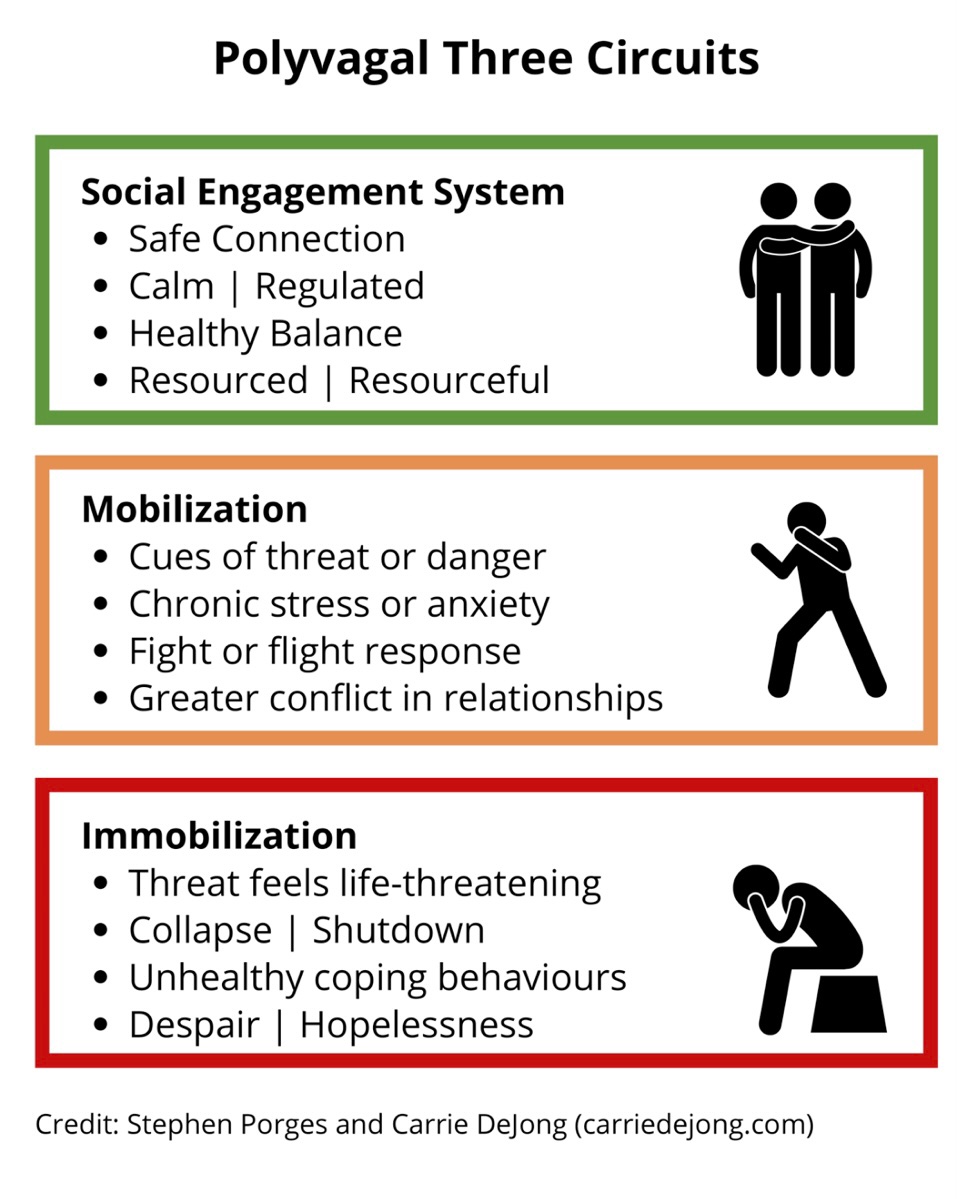15 Nov Our Innate Ability to Protect and Connect: Part 1

“The mind narrates what the nervous system knows.” Deb Dana
As an acupuncturist, the foundation of my experience and understanding of the manifestation of our vital energy has been informed by the concept of yin/yang. Yin/Yang has its roots in Taoism, a school of thought pivotal to the development of Chinese Medical Theory. Taoism sees all living things as an expression of the Tao, and each living being as a microcosm within the macrocosm. This means that all living things adhere to the same laws as their natural environment. Thus, the nature of our mind and body is continual transformation, and how we move in harmony with the ever evolving changes of each moment determines our well-being and our quality of life.
“The development of all phenomena in the universe is the result of the interplay of two stages, symbolized by Yin and Yang, and every phenomenon contains within itself both aspects in different degrees of manifestation.” (Maciocia 5)
We attempt to make sense of our internal and external world, and how we experience them, through categorization and differentiation. This is the role of yin/yang. They are often spoken about separately, however yin/yang exist relative to one another. We understand hot relative to cold, active relative to still, and light relative to dark. The focus and function yin/yang serve is not in highlighting differences, but in how they innately balance and temper each other. Yin/yang allow us to be in harmony with the ever changing nature of life, and to meet each moment with the adaptability needed to sustain us. The interdependence and fluid nature of yin/yang innately pivot, often in subtle ways, to sustain us, thus maintaining the intrinsic balancing act of homeostasis.
“The ability to return to regulation is the essence of resilience.” (Dana 17)
Day to day life is most often experienced in blended states of yin/yang. In fact, we rarely (if ever) experience a state of pure yin or yang. Because yin and yang temper each other, the more dominant the yin or yang, the more extreme our experience. Our closest experience of pure yang may be fire, which burns, spreads, and transforms. However, to be utilized in a way that sustains and protects us, it must be tempered and contained. There is something wonderful about a bonfire. It feels exhilarating, but also nourishing and safe. This is a great example of the yin aspect of our vital force. It nourishes and contains. It is the inhibition to the excitement and expansive nature of yang. (Maciocia 11) So in life, our experience is often one of an ever shifting and nuanced dance between the changing gradients of yin and yang in each moment.
If we step outside the lens of Asian medicine and look at the dynamic relationship that exists between the sympathetic and parasympathetic branches of the autonomic nervous system, we see a similarity. We see a similar relationship in the way our system works innately to protect us and seek connection via excitation and inhibition responses in fluid gradients. A sympathetic response is analogous to yang, as it works to preserve and protect us by utilizing activity and mobilization. However, to keep sympathetic energy from blazing out of control, or burning itself out, which many of us have experienced or are experiencing, we need an organizing, containing and tempering force. This is the role of the parasympathetic nervous system.
“The sympathetic branch is more yang- it prepares us for action and activity- while the parasympathetic branch is more yin, inhibiting and quieting its partner.” (Duncan and Kain 49)
Part of what is so meaningful about the similarity of yin/yang and the three branches of the autonomic nervous system, is that it highlights the innate wisdom of our system to discern in each moment how to allocate our inner resources in the interest of protecting and sustaining our well-being. We are more adaptable and capable than we may have ever imagined. Below the level of our cognitive awareness, we are wired to decipher cues from our internal and external environments, and when necessary, respond. The gift of Porges’ Polyvagal Theory is that we can now bring what is happening below the level of our awareness up to our consciousness. We can honor our system for how well it sustains and protects us, and become what Deb Dana calls an Active Operator of our Nervous System.
We can now speak the language of the autonomic nervous system and can use Polyvagal Theory to decode why we act and feel the way we do. What in the past may have seemed like a symptom we were anxious to get rid of, is now understood as the nervous system discerning a perceived danger and moving into a protective state. This observation allows us to bring what is happening below the level of cognition up into our perception. This perception allows us to interrupt ingrained patterns of response, acknowledge what in our life feels safe and dangerous, and form new Autonomic habits. (Dana 42)
Stay tuned for Part 2
Resources
- Dana, Deb. The Polyvagal Theory in Therapy. First ed., New York, W. W. Norton and Company, 2018.
- Duncan, Alaine. The Tao of Trauma. First ed., Berkeley, North Atlantic Books, 2019.
- Maciocia, Giovanni. The Foundations of Chinese Medicine: a comprehensive text for acupuncturists and herbalists. First ed., Edinburgh, Churchill Livingston, 1989.

